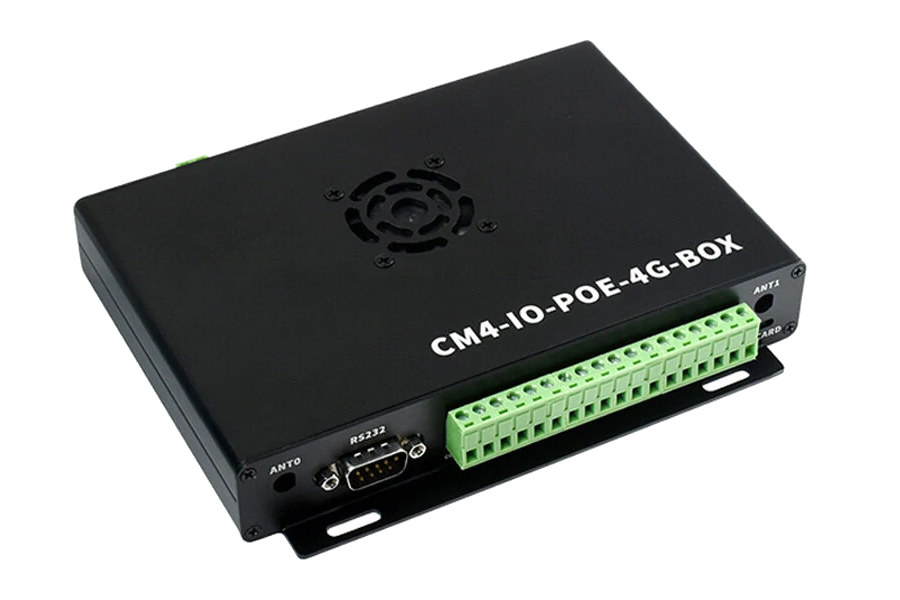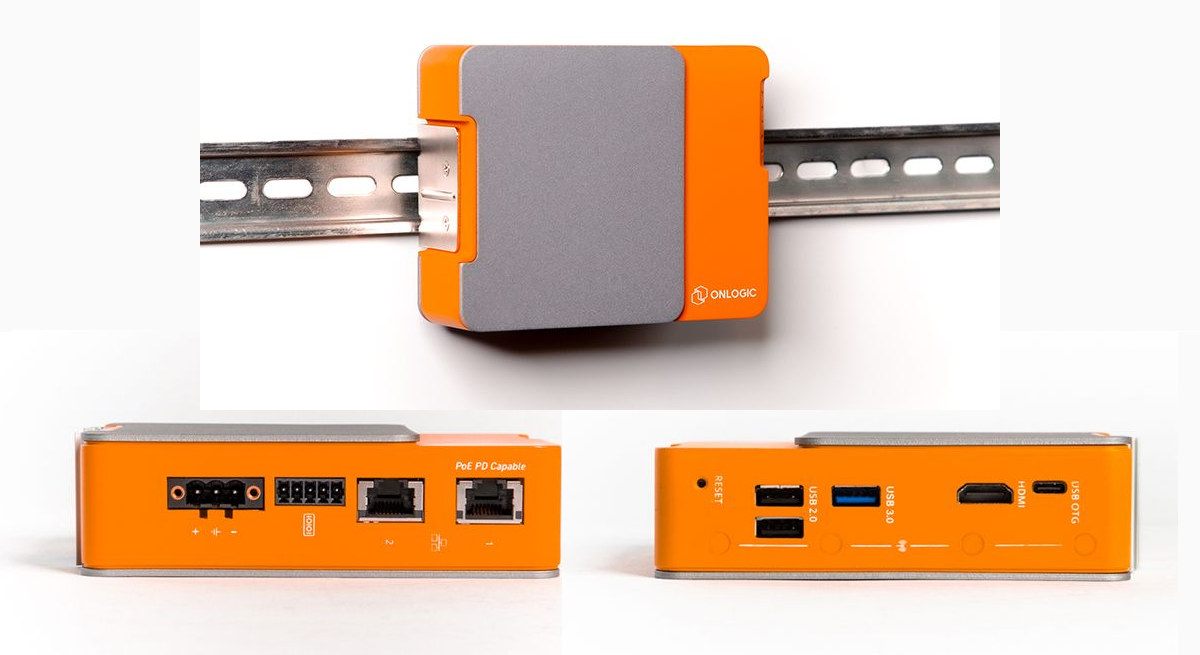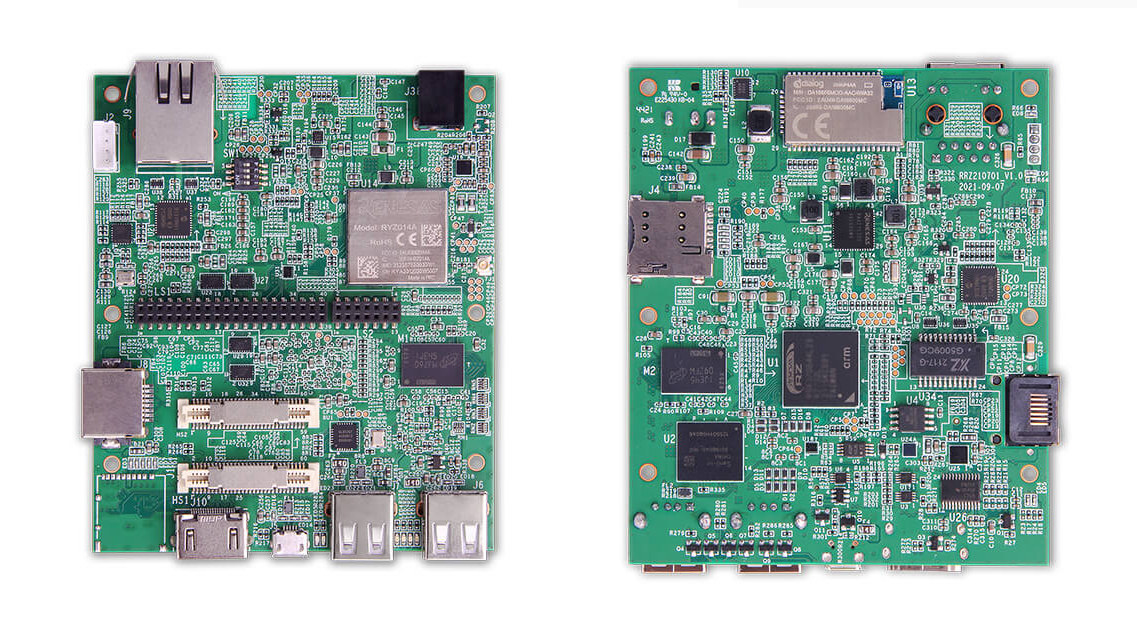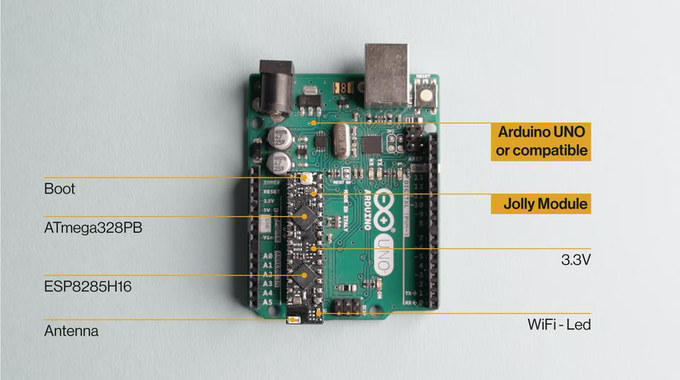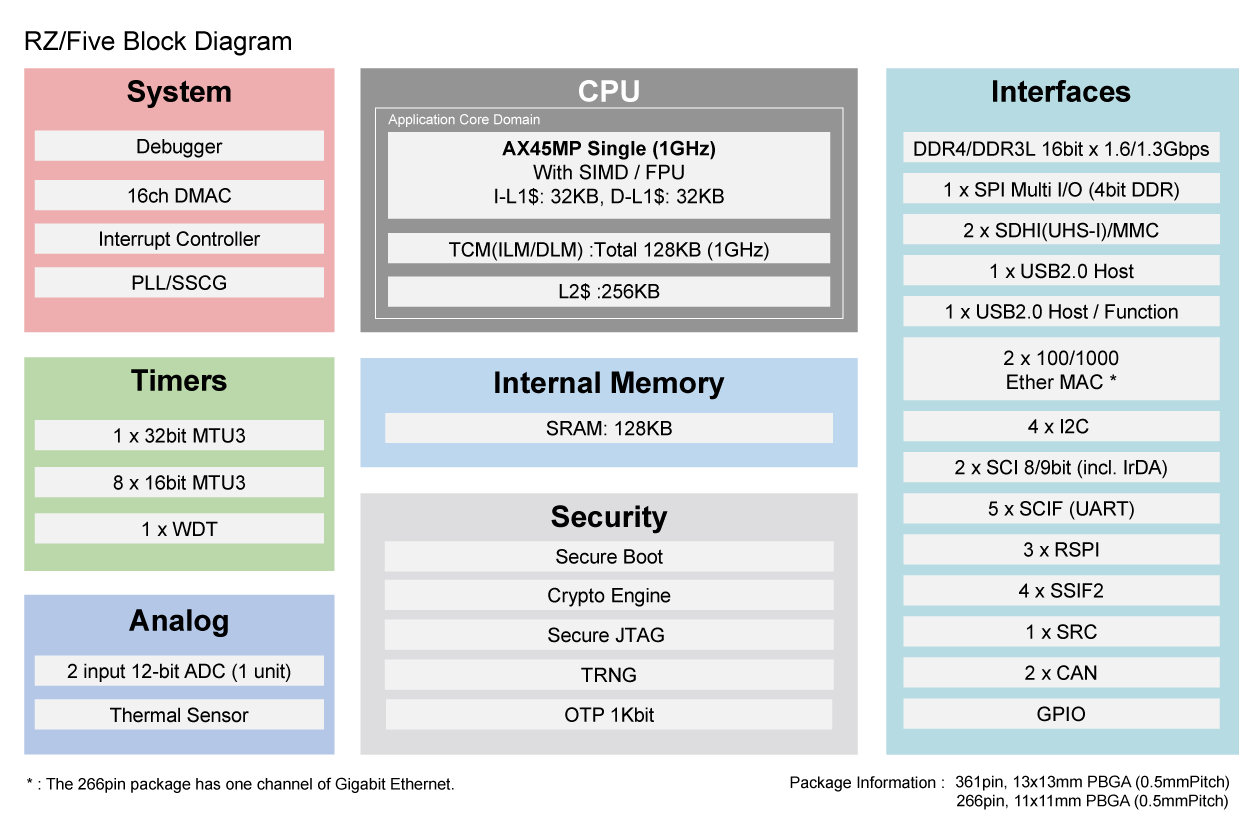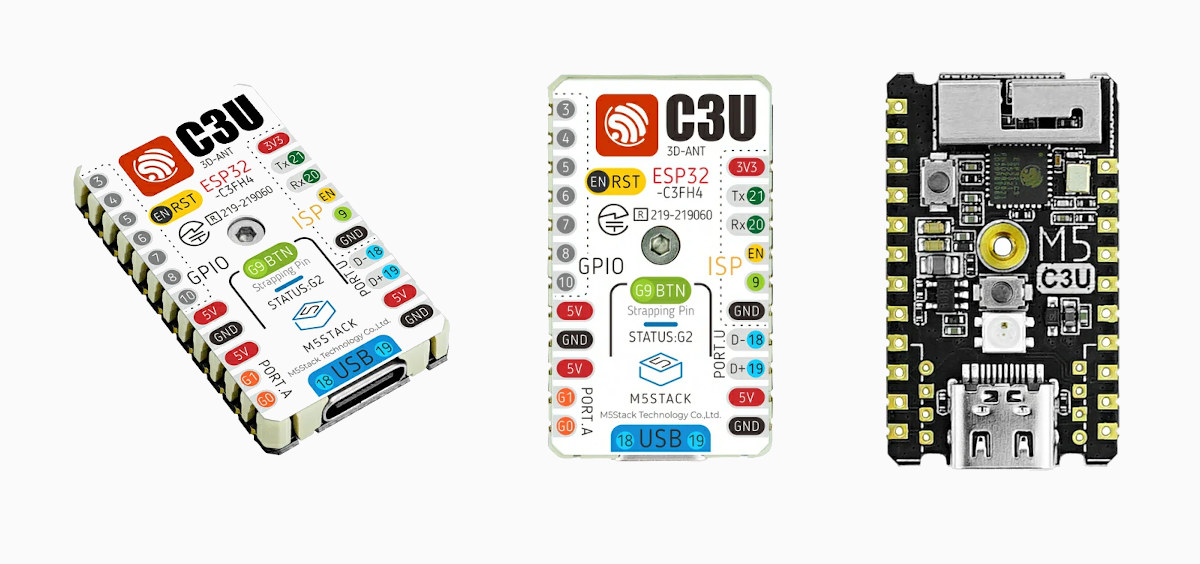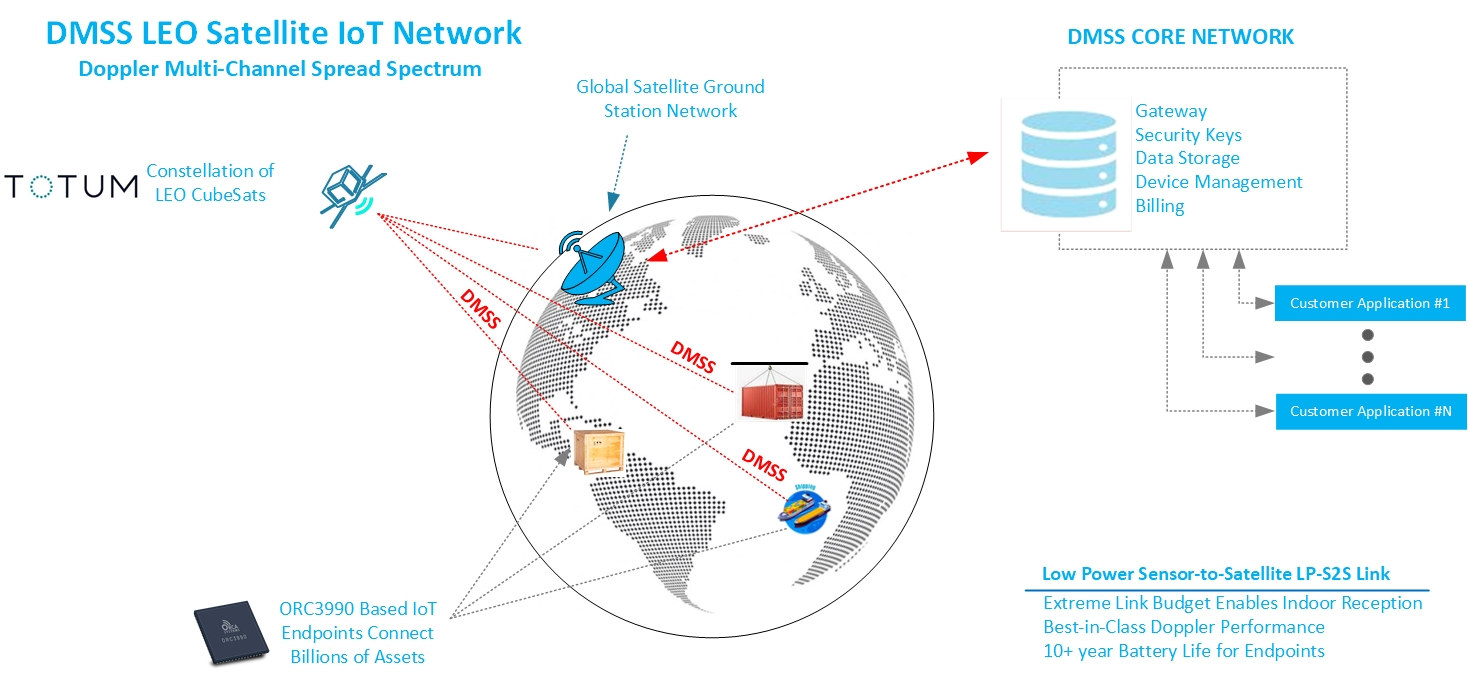While the Raspberry Pi Compute Module 4 is basically unobtanium, companies keep introducing products based on the Arm system-on-module, and Waveshare CM4-IO-POE-4G-Box is a complete system designed for industrial IoT applications with CAN Bus, RS232 and RS485 interfaces, Ethernet with PoE support, plus optional support for 2G to 5G cellular connectivity. The CM4-IO-POE-4G-Box is based on the “Compute Module 4 PoE 4G” carrier board which itself appears to be an update to the company’s earlier “Compute Module PoE 4G” carrier board for the Raspberry Pi CM3 module. CM4-IO-POE-4G-Box / Compute Module 4 PoE 4GB board specifications: Support SoM – All variants of Raspberry Pi Compute Module 4 Storage – MicroSD card socket used for Raspberry Pi Compute Module 4 Lite (without eMMC) Display 2x HDMI ports up to 4Kp30 (I suppose even 4Kp60) 2x 15-pin MIPI DSI connectors + openings in the enclosure for flat cables Camera – 2x internal […]
OnLogic announces Factor 201 Raspberry Pi CM4 industrial PC, Factor 202 controller coming soon
OnLogic has announced the launch of the Factor 201, a compact fanless industrial PC based on Raspberry Pi CM4 (Compute Module 4) for Edge IoT applications, and is working on the Factor 202 industrial controller with onboard digital and analog I/Os (DIO & AIO), as well as a capacitive touchscreen. OnLogic Factor 201 Specifications: SoM – Raspberry Pi CM4 with Broadcom BCM2711 quad-core Arm Cortex-A72 processor @ up to 1.5 GHz, up to 8GB LPDDR4 RAM, up to 32GB eMMC flash Additional storage – Optional M.2 SATA SSD (See Expansion section) Video Output – HDMI port up to 4Kp60 Networking 2x Gigabit Ethernet LAN (Optional PoE PD Input) via Realtek RTL8153 controller Optional WiFi/Bluetooth module on Raspberry Pi CM4 module + 3x antenna holes Optional 4G LTE wireless module via M.2 socket USB – 1x USB 3.2 Gen 1 port, 2x USB 2.0 ports, 1x USB-C management port Serial – […]
Ai-Thinker Hi-series WiFi modules support HarmonyOS (Sponsored)
Ai-Thinker Hi-series WiFi modules feature Hisilicon Hi3861/Hi3861L 32-bit RISC-V microcontroller with 2.4GHz 802.11b/g/n WiFi 4 and support for HarmonyOS for IoT projects. The new Hi-12F module even got certification for HarmonyOS “S identification” meaning the Hi-12F module supports HarmonyOS Connect for the Smart Home which used to be called “Works With HUAWEI HiLink” or “Powered by HarmonyOS”. Some of the highlights for Ai-Thinker Hi-series WiFi module include: Integrated high-performance 32-bit RISC-V microprocessor (Hi3861V100/Hi3861LV100) with 352KB SRAM, 288KB ROM, and 2MB Flash IEEE 802.11 b/g/n WiFi 4 up to 72.2Mbps @ HT20 MCS7 with STA and AP modes (Up to 6 clients in AP mode). Baseband and RF circuits with power amplifier PA, low noise amplifier LNA, RF balun, antenna switch, power supply management Multiple Security Capabilities with a built-in eFUSE, support for secure storage, and hardware ID Rich peripheral interfaces with UART, SPI, I2C, GPIO, ADC, PWM, I2S, SDIO, etc… […]
Renesas RZ/G2L or RZ/V2L AI development board comes with built-in LTE Cat M1 modem, 96boards form factor
Geniatech “AHAURA” RS-G2L100 / “AKITIO” RS-V2L100 is a Renesas RZ/G2L and RZ/V2L Cortex-A55/M33 development board that follows 96boards CE Extended v2.0 form factor, and is equipped with a Renesas LTE Cat M1 modem. Both RZ/G2L and RZ/V2L processors are basically the same, but the latter adds the “DRP-AI” (dynamically reconfigurable processor) AI accelerator for computer vision applications. The board also comes with up to 4GB RAM, two Gigabit Ethernet ports, a wireless WiFi and Bluetooth module, as well as Full HD HDMI video output, plus some USB ports, and the usual low-speed and high-speed expansion connectors from the 96Boards standard. Geniatech AHAURA RS-G2L100 and AKITIO RS-V2L100 specifications: SoC – Renesas RZ/G2L or RZ/V2L with dual-core Cortex-A55 processor @ 1.2 GHz, Arm Cortex-M33 core @ up to 200 MHz, Arm Mali-G31 GPU, and DRP-AI vision accelerator (RZ/V2L only) System Memory – 4GB (default) or 8GB LPDDR4 Storage – 8GB, 16GB, 64GB, […]
ESP8285 WiFi DIP module replaces ATMega328P MCU on Arduino UNO board (Crowdfunding)
Released over 10 years ago, Arduino UNO is still the best-selling Arduino board, but lacking WiFi in the IoT era is not ideal, so Gianluca Martino, Arduino co-founder and working with the company until 2015, decided to design the Jolly DIP module based on ESP8285 WiFi chip that can replace the ATmega328P 8-bit AVR DIP-40 microcontroller. Since ESP8285 cannot provide all I/Os, notably analog inputs offered by ATmega328P, Gianluca combined it with the ATMega328PB microcontroller in a compact SMD package to offer firmware compatibility plus WiFi connectivity in the same DIP form factor. Jolly module specifications: MCU – Microchip ATMega328PB 8-bit AVR microcontroller with 32 KB ISP Flash, 1 KB EEPROM, 2 KB SRAM (Based on data from the datasheet) Wireless chip – Espressif Systems ESP8285H16 WiFi SoC with 2MB integrated flash plus ceramic antenna Communication interfaces between the two chips – SPI + UART (the latter exclusively for ESP8285 […]
Renesas introduces RZ/Five Linux-capable 64-bit RISC-V microprocessor family
Renesas has launched its first RISC-V processor family with the RZ/Five general-purpose microprocessors based on an Andes AX45MP 64-Bit RISC-V CPU core, and with long-term Linux support via the industrial-grade CIP Linux that offers maintenance for over 10 years. The RISC-V processor is pin-to-pin compatible with the Arm Cortex-A55/M33–based RZ/G2UL processor family, and while being a general-purpose family, the RZ/Five chips are specifically well-suited to IoT endpoint devices such as gateways for solar inverters or home security systems. Renesas RZ/Five key features and specifications: CPU – Single-core 64-bit RISC-V AX45MP core @ up to 1.0 GHz Internal Memory – 128KB SRAM with ECC Memory I/F – 16-bit DDR4-1600 or DDR3L-1333 memory interfaces with in-line ECC; up to 4GB RAM Storage I/F – 2x SD/eMMC interfaces, SPI flash interface Networking – 2x Gigabit Ethernet MAC USB – 2x USB 2.0 Audio – 4-channel serial sound interface (SSI) Serial – 2x CAN/CAN-FD […]
M5Stamp C3U IoT module relies on ESP32-C3’s own USB interface for firmware programming
M5Stamp C3U is an update of the M5Stamp C3 RISC-V IoT module with heat-resistant cover, support for WiFi 4 and Bluetooth 5.0, that does without CH9102 USB to TTL chip, relying instead on the internal USB interface of ESP32-C3 processor to handle serial programming of the firmware, and gaining on extra GPIO pin in the process. While several ESP32 processors come with a built-in USB interface, many boards still use an external USB to TTL chip such as CH340 or CP2102 to handle the serial interface used for debugging and flashing the firmware likely because of limitations when using ESP32-C3’s USB serial/JTAG controller console, but M5Stack probably considered those to be workable, and the small cost-saving beneficial. M5Stamp C3U specifications: WiSoC – ESP32-C3FH4 32-bit single-core RISC-V processor @ up to 160 MHz, with 384KB ROM, 400KB SRAM, 8KB RTC SRAM, 4MB embedded flash, WiFi and Bluetooth Connectivity 2.4 GHz WiFi […]
Low-power satellite IoT SoC works with Totum’s Low Earth Orbit (LEO) network
Orca Systems ORC3990 is a low-power satellite Internet of Things (IoT) SoC that works with Totum’s Low Earth Orbit (LEO) network of satellites and targets outdoor and indoor tracking and monitoring applications. It’s not the first time we read about satellites being used for LPWAN networks, as Sigfox launched LEO satellites a few years ago to provide worldwide coverage even in remote locations like the Sahara desert, the two poles, and oceans. But I had never heard of Totum or Orca Systems before, so let’s have a closer look. Orca Systems ORC3990 ORC3990 specifications: Unnamed Arm cores Integrated RF Transceiver Low Power Sensor-to-Satellite (LP-S2S) connectivity in the 2.4 GHz ISM band Totum DMSS modem for improved doppler performance Link budget enables indoor signal coverage Support location fixes with 20m accuracy Low power – 10+ year battery life Package – 7x7mm QFN chip Temperature Range – -40 – +85°C Process – […]


